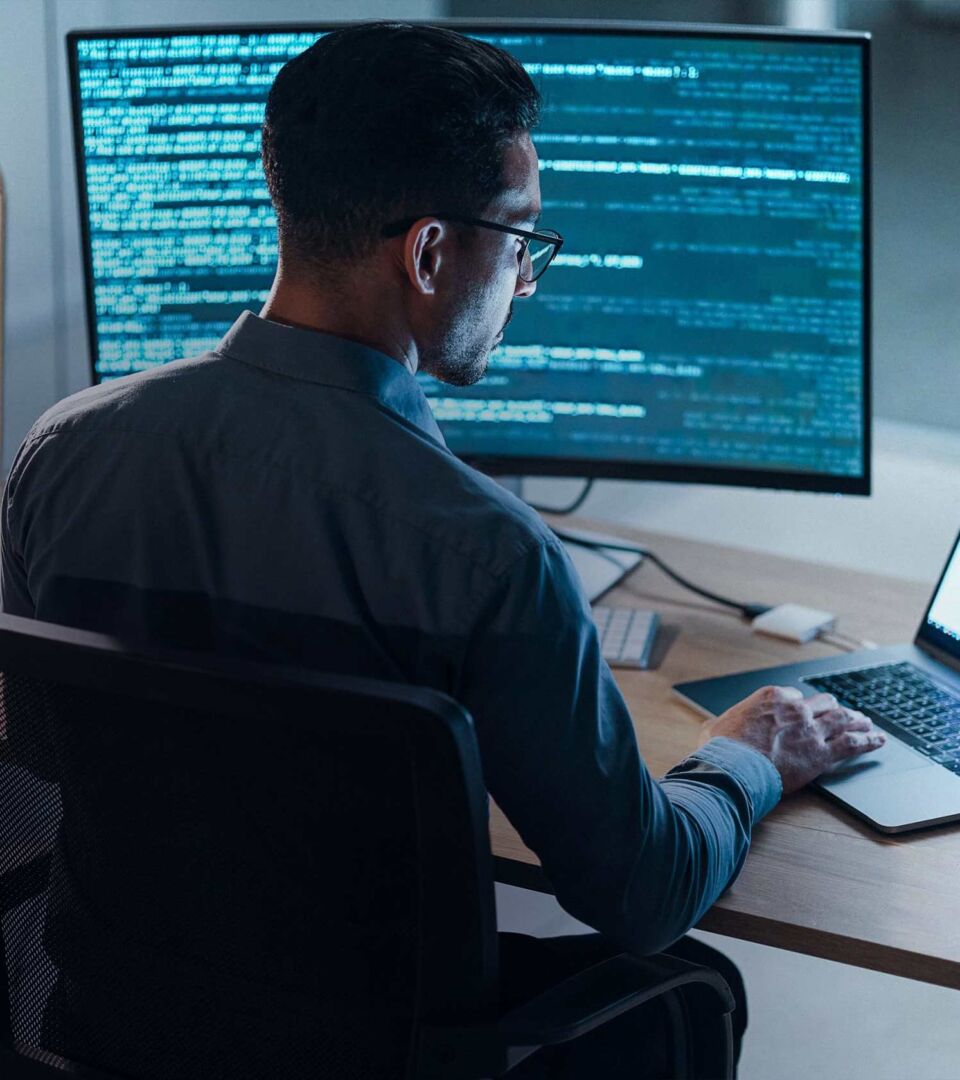Introduction: why can’t IT be separated from security today?
With the increasing digitisation of business processes, cybersecurity is becoming an integral part of everyday IT decision-making. Cloud services, hybrid working, BYOD models and decentralised approaches have completely changed the way businesses handle information, data and systems. This brings with it not only new opportunities, but also a significantly wider attack surface.
While it used to be possible to build defences around the physical perimeter of the network, today’s security architectures must account for the constant availability of services from anywhere and the associated threat dynamics.
What is cybersecurity and what is its scope?
Cybersecurity is an umbrella term for the strategies, technologies, processes and standards that aim to protect systems and data from misuse, loss or damage. It includes not only defending against attacks, but also:
- Identity and access control.
- Modern endpoint management
- Data protection, backup and recovery
- Network and traffic protection
- Detection of disturbances and anomalies.
- Incident response.
- Ensuring business continuity.
- Compliance with regulatory requirements.
Security today is not just about “antivirus on the station” or “a set of firewall rules”. It’s a complex interdisciplinary field that encompasses IT governance, network infrastructure, user habits and legal liability.
The importance of cybersecurity in the daily operation of companies
Cyber threats have long since ceased to be the exclusive concern of large corporations. Small and medium-sized businesses are often targeted precisely because they do not have adequate protection or the means to detect and respond.
Security incidents can have different forms of impact:
- Cloud service outages and service interruptions.
- Loss of protected information and digital assets.
- Loss of customer confidence or other financial impacts.
In all these scenarios, the speed of detection, the quality of the response and the level of preparedness of the organisation are crucial.
Types of threats: how do current risks differ from those of the past?
Modern threats are characterised by a higher level of automation, targeting and sophistication. The environment in which they operate has also changed significantly, with attacks often taking place through legitimate access channels rather than brute force.
Key threats today include:
- Malware: Infectious code that can record keystrokes, steal data or take over the system.
Phishing: Fraudulent emails that mimic legitimate communications in order to obtain sensitive information.
Zero-day vulnerabilities: previously unknown weaknesses in software that can be exploited before a patch is available.
Malware: infectious code that can record keystrokes, steal data or take over the system.
Ransomware: attacks that encrypt corporate data and demand a ransom.
Insider threats: intentional or unintentional employee behavior that compromises security.
At the same time, the nature of defenses is changing – anomaly detection and user behavior analysis (UEBA) are becoming as important as traditional antiviruses or firewalls.
How can a systematic approach to security be taken?
The basic premise of the strategic approach is a realistic view of the current level and state of security of the organisation. This includes:
1. Analysis of the current situation
Level of application and use of Zero Trust principles – not trusting any user or device until they prove their legitimacy.
Identity mapping and access permissions.
Audit devices that access corporate systems.
Checking the configuration and adding the appropriate components for modern management and protection of cloud or hybrid environments (from EntraID/Active Directory to Intune/Jamf to selecting the appropriate EDR/XDR).
2. Real-time detection
Sophisticated attacks cannot be completely eliminated – but they can be detected early. This is possible through:
SIEM/SOAR solutions such as Microsoft Sentinel to store logs and automate first response to incidents.
- Log analysis and suspicious behavior detection.
3. Incident response and continuous improvement
A response plan is crucial, especially for regulated sectors. It includes:
Clearly defined incident detection procedures.
Automated reporting and categorization of threats e.g. according to the MITRE ATT&CK framework.
Responsibilities of individual roles and procedures in incident response and recovery environments.
Detailed documentation of the incident.
Root Cause Analysis (RCA) evaluation for subsequent improvements.
Legislation and standards: what does NIS2 bring?
The NIS2 Directive introduces the obligation to actively manage cyber security for a wide range of organisations in the EU region.
Key requirements include:
Establishing the responsibility of management for implementing security measures and overseeing cyber security.
Asset identification and operational risk management.
Monitoring and managing security incidents.
Possible need, depending on the level of regulation of the entity, to report incidents to the control authority according to the established deadlines.
Failure to comply with the rules may result in fines or other penalties.
NIS2 brings a higher level of accountability for senior management and extends oversight of companies in the energy, healthcare, transport, digital services and cloud solution providers.
Technology in practice: What features should a modern security solution have?
A good security framework should:
- Integrate data for continuous evaluation needs from multiple sources (cloud services, endpoint, network, etc.).
- Perform User and Equipment Behavior Analysis (UEBA) and continuous anomaly assessment.
- Implement modern endpoint management and conditional access policies.
- Micro-segmentation of networks involving active protection elements such as the Next Generation Firewall (NGFW).
- Emphasis on encryption, data protection and regular testing of backup restores.
Keep audit logs for longer periods of time in a separate environment from production (e.g. 365 days). - Regular checking before and after changes in the system configuration, cyclic verification in the form of penetration tests, etc.
The role of education and safety culture
Cybersecurity is not just about technology – it is largely built on people. The most common intrusions occur through user error, lack of account security or clicking on a fake link.
Regular training, simulating attacks (e.g. phishing campaigns) and raising awareness of the risks are among the most effective and low-cost measures.
Summary: Strategic approach instead of reactive problem solving
Digital security today must be understood as a cyclical process:
- Baseline assessment.
- Deployment of detection and monitoring tools.
- Setting up a response framework for crisis situations.
- Regular audit and optimization.
The key to success is continuity, visibility and the ability to adapt to evolving threats. Whether an organisation chooses to build its own solution or use a specialist partner, control, transparency and scalability are important.


































